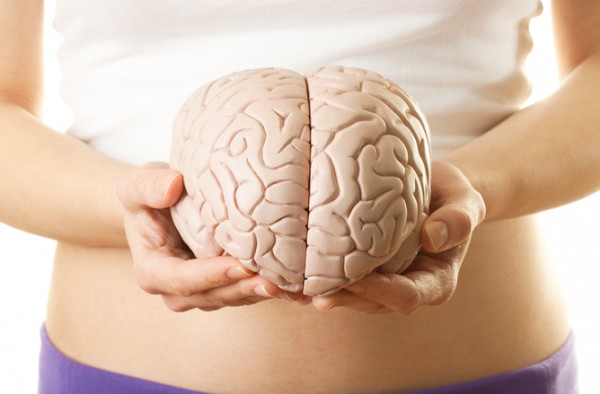By Jonathan Fry, UCL
Already widely prescribed as antidepressants, SSRIs such as fluoxetine (the non-brand name for Prozac) have gained increasing acceptance over the past 20 years in the treatment of premenstrual syndrome (PMS).
Recent research has given us an idea of the way these drugs do this, which should pave the way to improved treatment.
SSRIs, short for selective serotonin re-uptake inhibitors, are thought to work by increasing levels of serotonin, a neurotransmitter that relays information between nerve cells in the brain. Once a message has been sent, serotonin is reabsorbed but SSRIs stop this from happening, leaving more of the chemical in the brain. As serotonin is linked to good mood it is extensively used to treat depressive and anxiety disorders.
In treating PMS, however, these drugs appear to do something else instead, inhibiting an enzyme involved in the metabolism of the ovarian steroid hormone progesterone.
Premenstrual disorders
Most women have experienced some of the symptoms of PMS, which include irritability, anxiety, fatigue, sleep disturbance and an increased sensitivity to pain, as a normal part of their menstrual cycle. While about a quarter seek treatment for the more loosely defined premenstrual syndrome, an estimated 5% of women experience a severe and debilitating form called premenstrual dysphoric disorder (PMDD) during their reproductive years.
We know that PMS is caused by changes in ovarian hormone production during the menstrual cycle, in particular the approximately ten-fold rise in progesterone after ovulation, followed by a sharp fall in its secretion in the week before menstruation. Importantly, this rapid fall in ovarian progesterone secretion is accompanied by a decline in its metabolite allopregnanolone, a steroid which acts as a potent sedative and tranquilising agent.
In other words, premenstrual women are undergoing withdrawal from the internal tranquiliser allopregnanolone. This is a major contributory factor in PMS.
So how to treat it?
If PMS is caused by cyclic ovarian activity, then one potential cure is to stop ovulation. Of course, this is what happens in pregnancy and one interesting idea is that PMS evolved to drive women away from an infertile pair bond.
There are drugs which will also prevent ovulation but, if used over the long-term, they require additional therapy with synthetic hormones to replace the missing ovarian oestrogens and progesterone. Then there are contraceptive steroids that can suppress ovulation and cause some relief from PMS, but symptoms can recur during the withdrawal bleed period.
Replacement therapy with progesterone is also problematic as this can worsen the symptoms and make some patients drowsy, probably because of the metabolism of progesterone into excessive amounts of the sedative allopregnanolone.
The use of fluoxetine
An ideal treatment for PMS would be a drug which slows the fall in allopregnanolone towards the end of the menstrual cycle. This appears to be how fluoxetine works. Treatment with fluoxetine and other SSRIs can increase the concentration of allopregnanolone in rat and mouse brains, a response which can be seen within an hour and at doses lower than those required to inhibit the re-uptake of serotonin. Low doses of SSRIs can also increase allopregnanolone in human brains.
A recent study in female rats showed that low doses of fluoxetine which didn’t block the re-uptake of serotonin but did increase allopregnanolone in the brain, also prevented the development of PMS-like symptoms. Interestingly, they also blocked the increase in excitability of brain circuits mediating responses to fear.
Fluoxetine acts on a biochemical switch
The ovary and brain convert progesterone to allopregnanolone in two steps, both controlled by enzymes. In the first step, progesterone is converted into a steroid called 5α-dihydroprogesterone – an inactive precursor. The second step is regulated by a pair of enzymes, one of which transforms this precursor into allopregnanolone, while the other converts allopregnanolone back into the inactive precursor. So the level of allopregnanolone is controlled by the balance of these opposing activities – essentially, a biochemical switch.
In rat brains, fluoxetine blocks the enzyme that converts allopregnanolone back into the inactive precursor. It also has the same effect on the human enzyme. So, fluoxetine should blunt the premenstrual fall in allopregnanolone.
PMS by Shutterstock
Sex and age differences
If fluoxetine elevates allopregnanolone in the brain in this way then we can understand why younger women of reproductive age, with regular fluctuations of allopregnanolone, are more sensitive to SSRIs than men, who produce continuous low levels of this steroid.
This sex difference can be observed in rats. Indeed, there is growing evidence from animal studies that elevation of brain allopregnanolone may be an important part of the antidepressant response to SSRIs.
The elevation of allopregnanolone in the brain from only low doses of fluoxetine also explains why women with PMS respond so quickly – within two days – to this drug. By contrast, full antidepressant responses to larger doses of fluoxetine which alter brain serotonin function can take up to two months.
There is therefore a basis here for the treatment of PMS with low doses of SSRIs, given intermittently to reduce the side effects of these drugs, which include nausea, diarrhoea, anorexia, insomnia, tiredness and sexual dysfunction. The discovery of an allopregnanolone metabolising enzyme as a target means that we can also hope for the development of more specific drugs for the treatment of PMS.
![]()
This article was originally published on The Conversation.
Read the original article.



